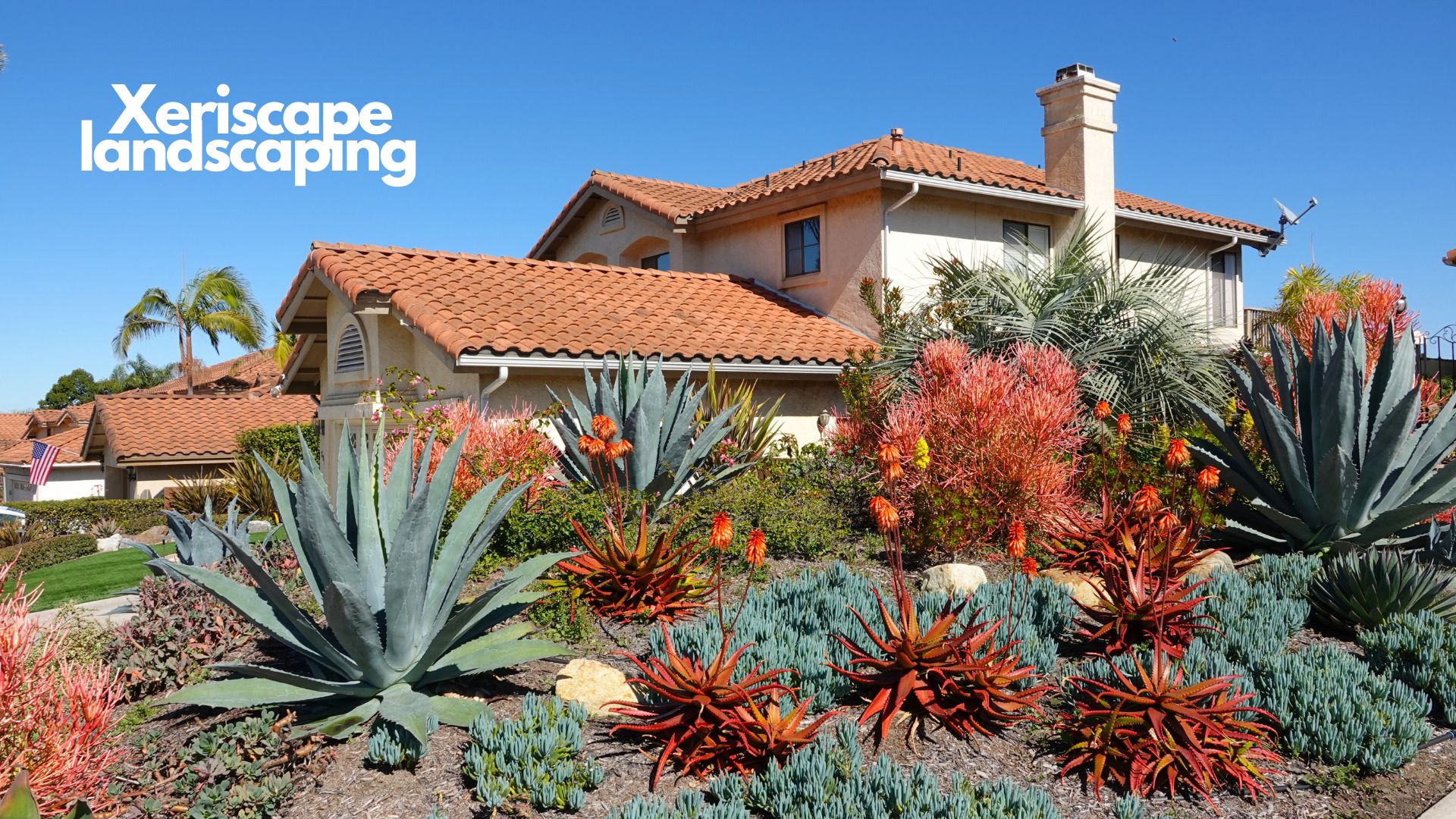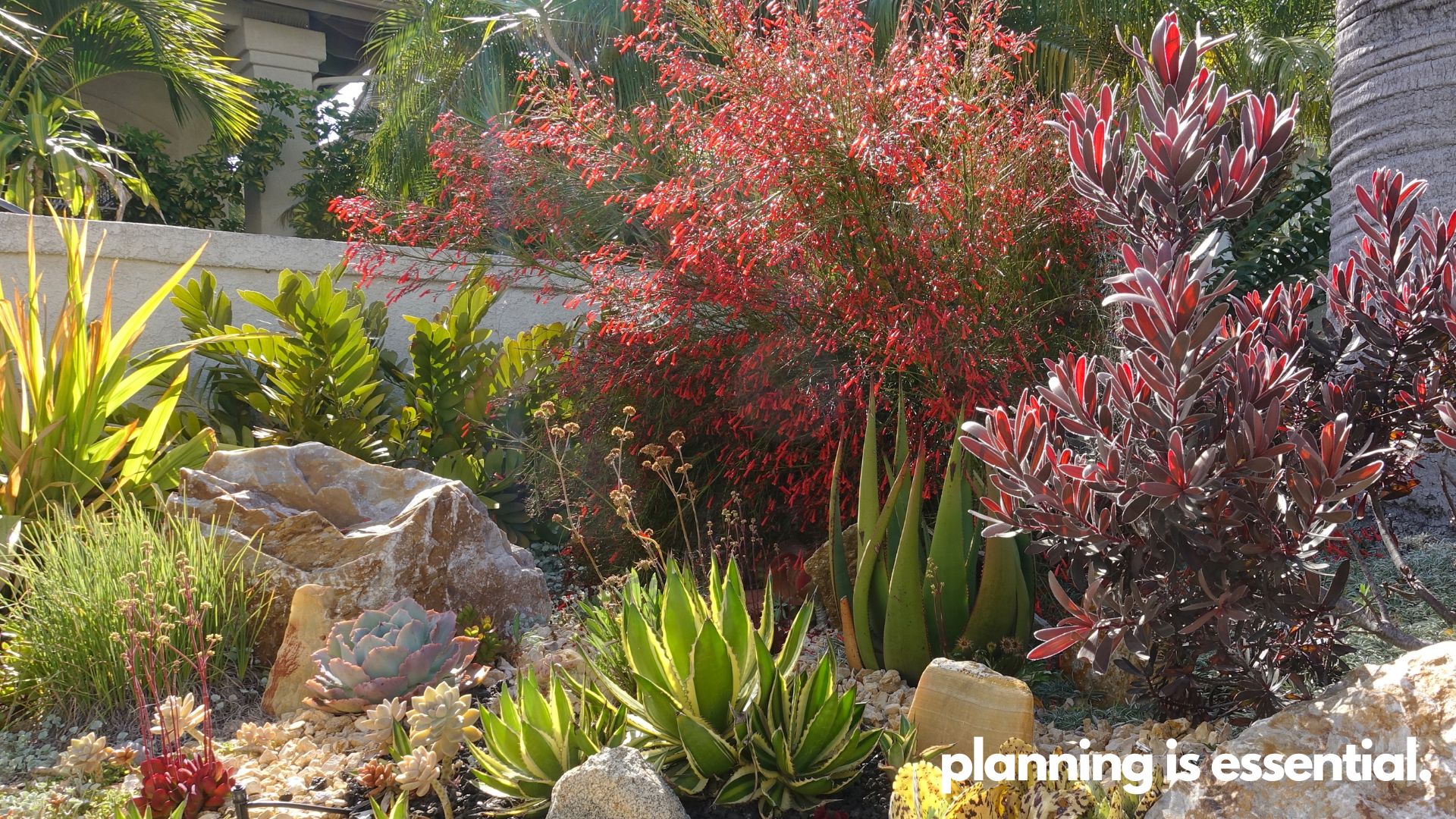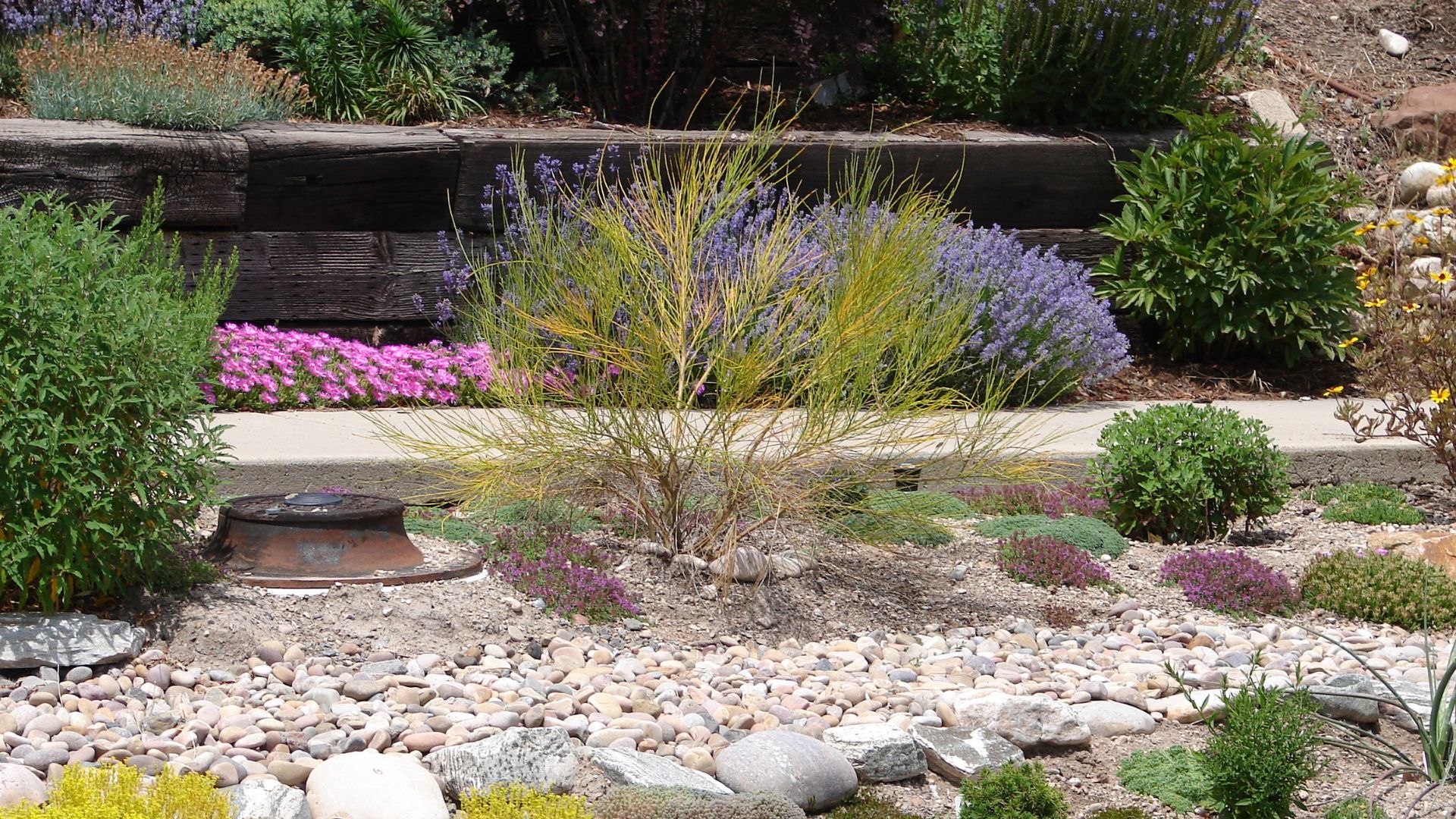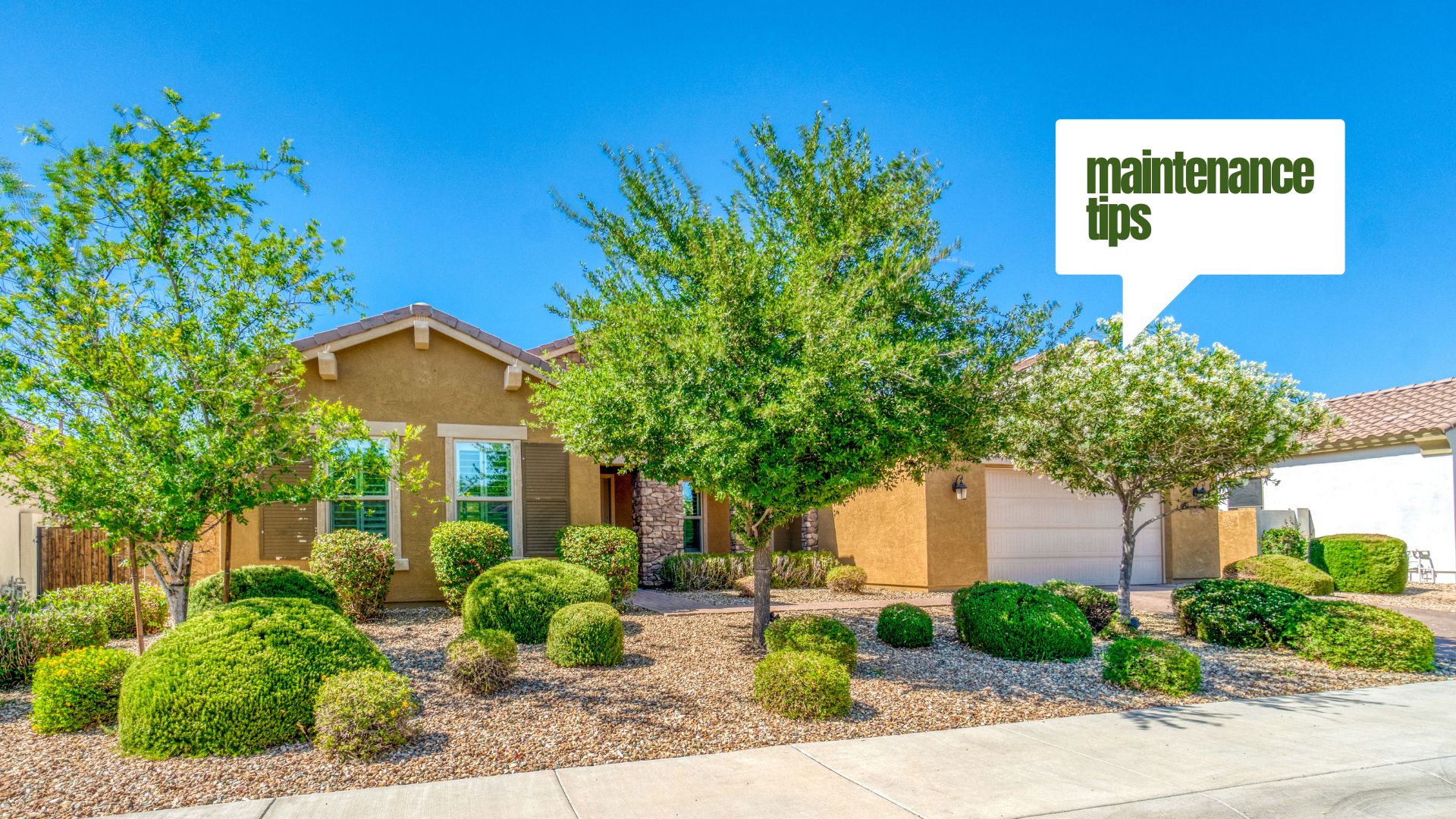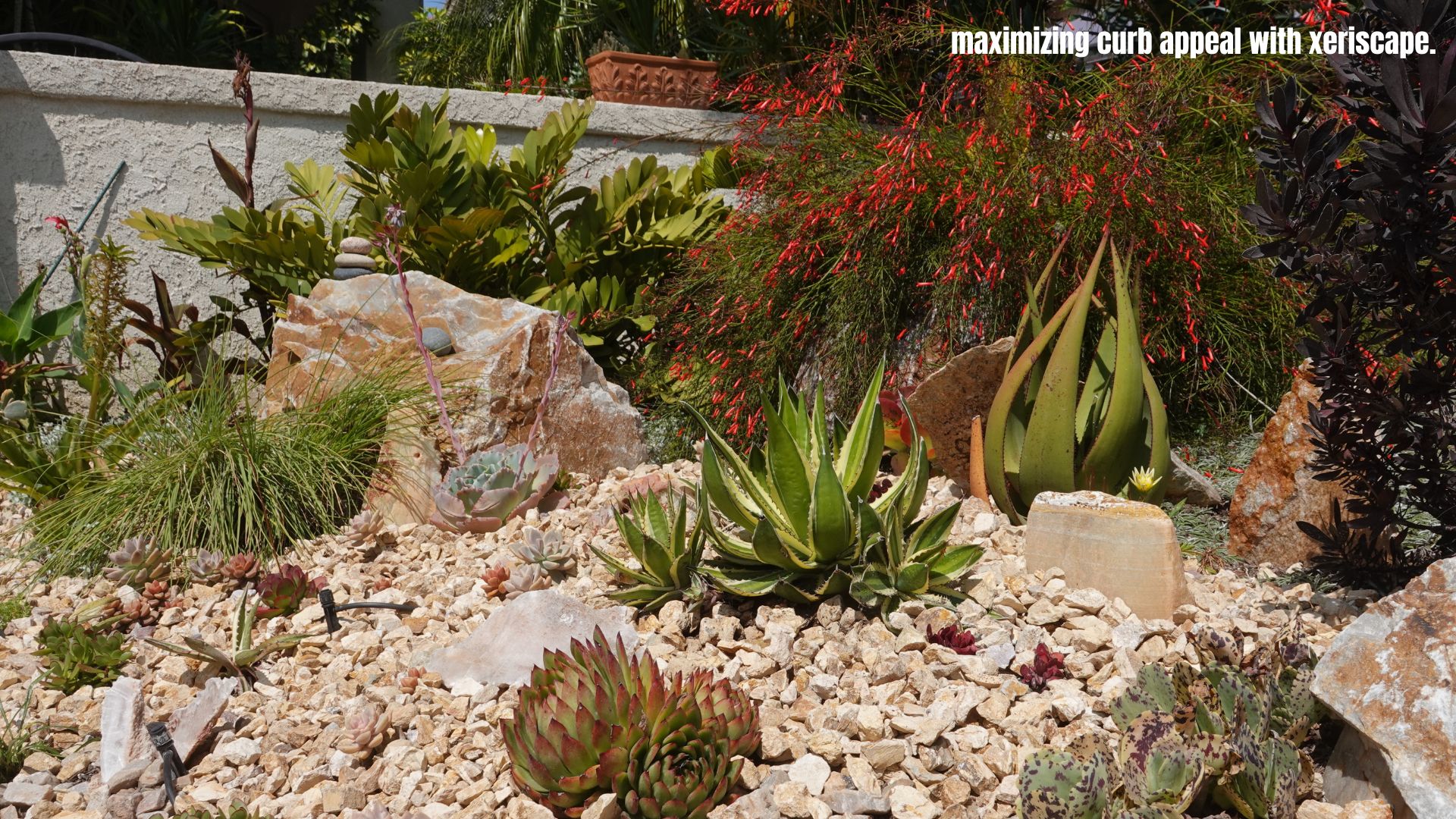In a world where sustainability meets style, xeriscaping offers a fresh approach to landscaping. Inspired by the Greek word “xeros,” meaning dry, it's not just about conserving water but also about designing captivating outdoor spaces.
As we become more conscious of our water usage, turning to designs like a desert landscape front yard or a xeriscape front yard is both a nod to beauty and a commitment to the environment.
Read on and let's delve into how you can make a lasting impression while being kind to our planet.
Benefits of Xeriscape Landscaping
The allure of xeriscaping extends beyond its water-saving capabilities. Environmentally, it's a game-changer, drastically reducing water consumption and promoting a healthier ecosystem.
On a practical level, homeowners can expect a significant reduction in their water bills and less time spent on yard maintenance. But the cherry on top? The undeniable curb appeal that transforms your home into a neighborhood gem.
Water conservation: At its core, xeriscaping is about reducing water usage. This conserves a precious resource and translates to significant savings on water bills.
Eco-friendly: By promoting native and drought-resistant plants, xeriscaping fosters a healthier ecosystem, supporting local wildlife and reducing the need for chemical fertilizers and pesticides.
Reduced maintenance: A well-planned xeriscape garden requires less upkeep, freeing homeowners from regular mowing, fertilizing, and pest control.
Enhanced curb appeal: Beyond its practical benefits, xeriscaping elevates the aesthetic appeal of homes, making them stand out with unique and captivating landscapes.
Increased property value: Homes with xeriscaped yards often see increased property value due to the attractive and sustainable landscaping approach.
Adaptability: Xeriscaping is versatile and can be tailored to various climates and regions, ensuring the garden remains vibrant throughout the year.
Soil erosion prevention: The use of mulch and strategic plant placement in xeriscaping helps prevent soil erosion, protecting the topsoil and the garden's foundation.
Reduction in carbon footprint: Traditional lawns often require gas-powered mowers for maintenance. With xeriscaping, the reduced need for mowing contributes to decreased carbon emissions.
Planning Your Curb Appeal Xeriscape Front Yard
Before diving into xeriscaping, a comprehensive plan is essential. Start with an in-depth soil analysis to gauge its type and health. Follow this with a site evaluation to identify sunny and shaded areas, which will influence your plant selection.
This groundwork ensures that your xeriscape front yard landscaping is beautiful and sustainable. The essence of xeriscaping lies in choosing plants that naturally thrive in your region, reducing the need for external inputs.
A successful xeriscape garden requires meticulous planning:
Soil analysis: Begin with thoroughly examining your soil to determine its type, pH level, and nutrient content. This will guide your plant and fertilizer choices.
Site evaluation: Identify the sun and shade patterns of your yard. This will influence where specific plants are placed, ensuring they receive the optimal sunlight.
Drought-tolerant plants: Focus on plants that naturally thrive in your region and withstand dry conditions. These plants will form the backbone of your xeriscape garden.
Efficient irrigation: Consider installing a drip irrigation system or soaker hoses, which deliver water directly to plant roots, minimizing wastage.
Grass alternatives: If you desire a lawn-like area, consider grass alternatives such as buffalo grass or creeping thyme that require less water and maintenance.
Hardscape integration: Plan for pathways, patios, or seating areas using permeable materials that allow water to seep through, reducing runoff.
Water features: If you wish to include a water feature, opt for a recirculating system to conserve water. This can become a focal point and attract local wildlife.
Budgeting: Set a realistic budget for your xeriscape project. This will guide your plant choices, hardscape materials, and any additional features you wish to include.
Designing with Xeriscaping
Creativity is key when designing a xeriscape garden:
Native plants: Embrace plants that are indigenous to your region. They are adapted to local conditions and require minimal care.
Rocks and mulch: Integrate rocks of various sizes and colors to add texture. Mulch, on the other hand, helps retain soil moisture and suppress weeds.
Zoning: Group plants with similar water needs together. This ensures efficient watering and creates visually cohesive plant clusters.
Focal points: Introduce elements like water features, sculptures, or unique plants to draw attention and add character to your landscape.
Color coordination: Plan your garden's color palette. Use flowering plants that bloom at different times of the year to ensure continuous color throughout the seasons.
Vertical gardening: Utilize vertical space by incorporating trellises, vertical planters, or wall gardens. This adds depth and dimension to your landscape.
Pathways: Design pathways using stepping stones, decomposed granite, or gravel. These materials are permeable and enhance the natural look of the xeriscape garden.
Garden art: Integrate decorative elements like wind chimes, bird baths, or garden sculptures. These elements can enhance the aesthetic appeal and create a more personalized space.
Xeriscape Maintenance
While xeriscaping is low-maintenance, some care is essential:
Watering: Establish a routine, focusing on the early morning or late evening. Water deeply but infrequently to encourage deep root growth.
Mulching: Regularly replenish mulch to conserve moisture, regulate soil temperature, and deter weeds.
Pruning: Periodically prune plants to maintain shape and remove dead or diseased portions.
Pest and disease management: Stay vigilant and address potential issues early on. Opt for organic solutions to maintain the eco-friendly ethos of xeriscaping.
Soil health: Over time, soil can become compacted. Aerate the soil occasionally to ensure it remains loose and conducive for root growth.
Fertilization: While xeriscaping plants typically require less fertilizer, providing them with the necessary nutrients is essential. Use organic compost or slow-release fertilizers to nourish the soil.
Weed control: Even in xeriscaped gardens, weeds can emerge. Regularly inspect your garden and hand-pull any weeds to prevent them from competing with your plants for nutrients and water.
Seasonal care: Some plants may require protection during extreme weather conditions. Consider using frost cloths in colder months or providing shade during intense summer heat.
Enhancing Curb Appeal with Xeriscape
Beyond its eco-friendly credentials, xeriscaping is a visual delight. You can craft a dynamic, multi-layered landscape by thoughtfully selecting plants of varying colors and textures.
To draw the eye, introduce focal points, perhaps a sculptural plant or a water feature. For a comprehensive visual treat, peruse these exemplary xeriscape front yard designs.
Color and texture variety: Xeriscaping offers a diverse palette of colors and textures. From the silvery-green hues of sage plants to the vibrant blossoms of drought-tolerant flowers, there's a spectrum of colors to choose from. Combine this with the varied succulents,
ornamental grasses, and gravel textures to create a visually rich landscape.
Focal points: Strategically placed focal points can draw attention and create visual interest. This could be a uniquely shaped cactus, a decorative boulder, or even a water-wise water feature that recirculates water.
Decorative elements: Incorporate elements like garden sculptures, ornamental rocks, or even a dry riverbed design. These elements enhance the garden's beauty and tell a story, making your xeriscape uniquely yours.
Layering: Just like in traditional gardening, layering plants of varying heights can create depth and visual intrigue. Place taller plants at the back and shorter ones at the front for a tiered effect.
Borders and edging: Define your garden beds with distinct borders, be it with stones, bricks, or steel edging. This adds to the curb appeal and provides a neat and organized look.
Final Thoughts
In essence, xeriscaping is the future of landscaping, blending aesthetics with sustainability. It's an invitation to embrace a greener lifestyle where beauty and responsibility coexist. If you're ready to embark on this transformative journey, reach out to a local xeriscape expert and bring your vision to life! (Related article: What Is Xeriscaping? (+ 6 Examples))
